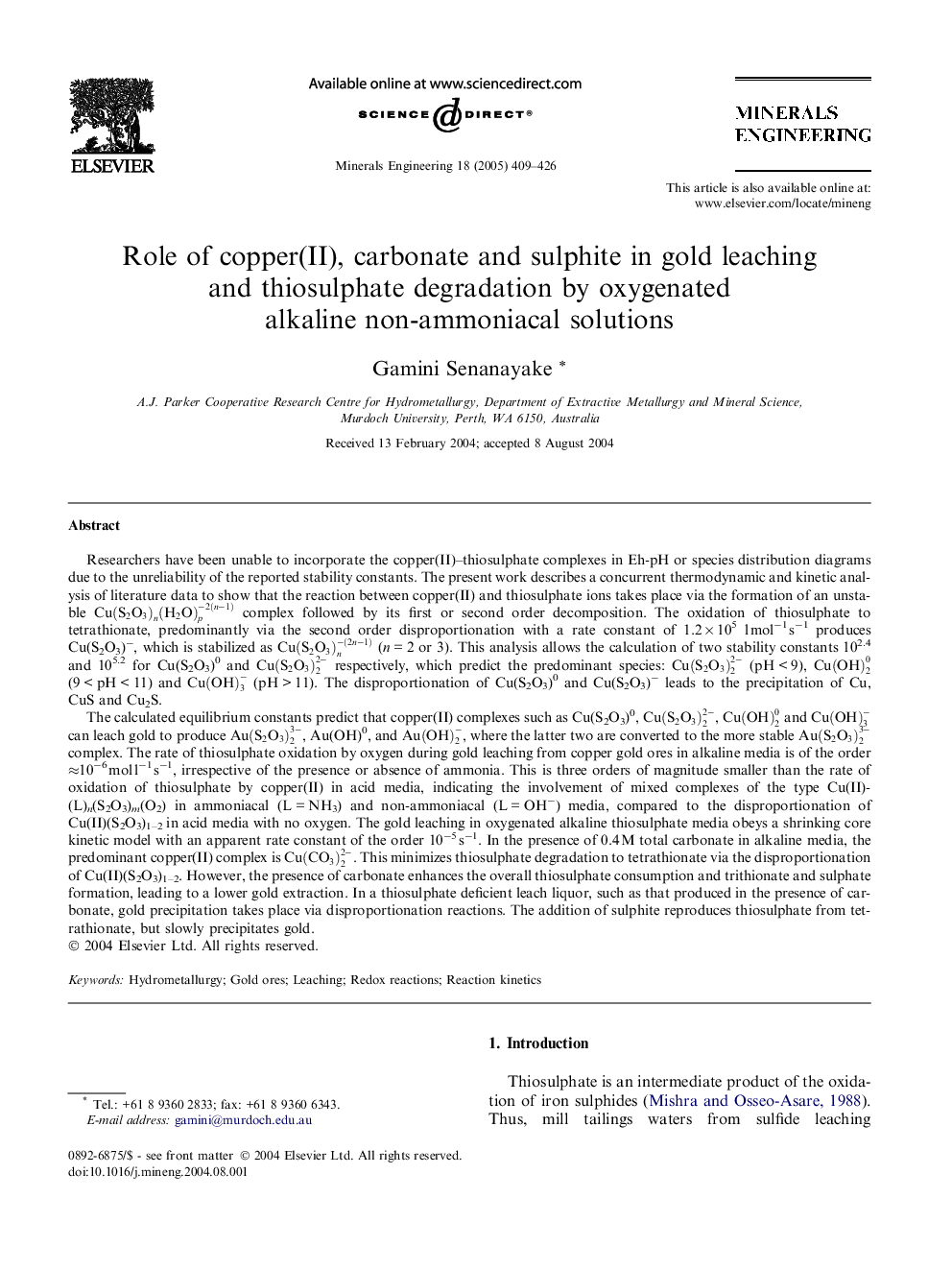| Article ID | Journal | Published Year | Pages | File Type |
|---|---|---|---|---|
| 10279868 | Minerals Engineering | 2005 | 18 Pages |
Abstract
The calculated equilibrium constants predict that copper(II) complexes such as Cu(S2O3)0, Cu(S2O3)22-, Cu(OH)20 and Cu(OH)3- can leach gold to produce Au(S2O3)23-, Au(OH)0, and Au(OH)2-, where the latter two are converted to the more stable Au(S2O3)23- complex. The rate of thiosulphate oxidation by oxygen during gold leaching from copper gold ores in alkaline media is of the order â10â6 mol lâ1 sâ1, irrespective of the presence or absence of ammonia. This is three orders of magnitude smaller than the rate of oxidation of thiosulphate by copper(II) in acid media, indicating the involvement of mixed complexes of the type Cu(II)(L)n(S2O3)m(O2) in ammoniacal (L = NH3) and non-ammoniacal (L = OHâ) media, compared to the disproportionation of Cu(II)(S2O3)1-2 in acid media with no oxygen. The gold leaching in oxygenated alkaline thiosulphate media obeys a shrinking core kinetic model with an apparent rate constant of the order 10â5 sâ1. In the presence of 0.4 M total carbonate in alkaline media, the predominant copper(II) complex is Cu(CO3)22-. This minimizes thiosulphate degradation to tetrathionate via the disproportionation of Cu(II)(S2O3)1-2. However, the presence of carbonate enhances the overall thiosulphate consumption and trithionate and sulphate formation, leading to a lower gold extraction. In a thiosulphate deficient leach liquor, such as that produced in the presence of carbonate, gold precipitation takes place via disproportionation reactions. The addition of sulphite reproduces thiosulphate from tetrathionate, but slowly precipitates gold.
Related Topics
Physical Sciences and Engineering
Chemical Engineering
Chemical Engineering (General)
Authors
Gamini Senanayake,
